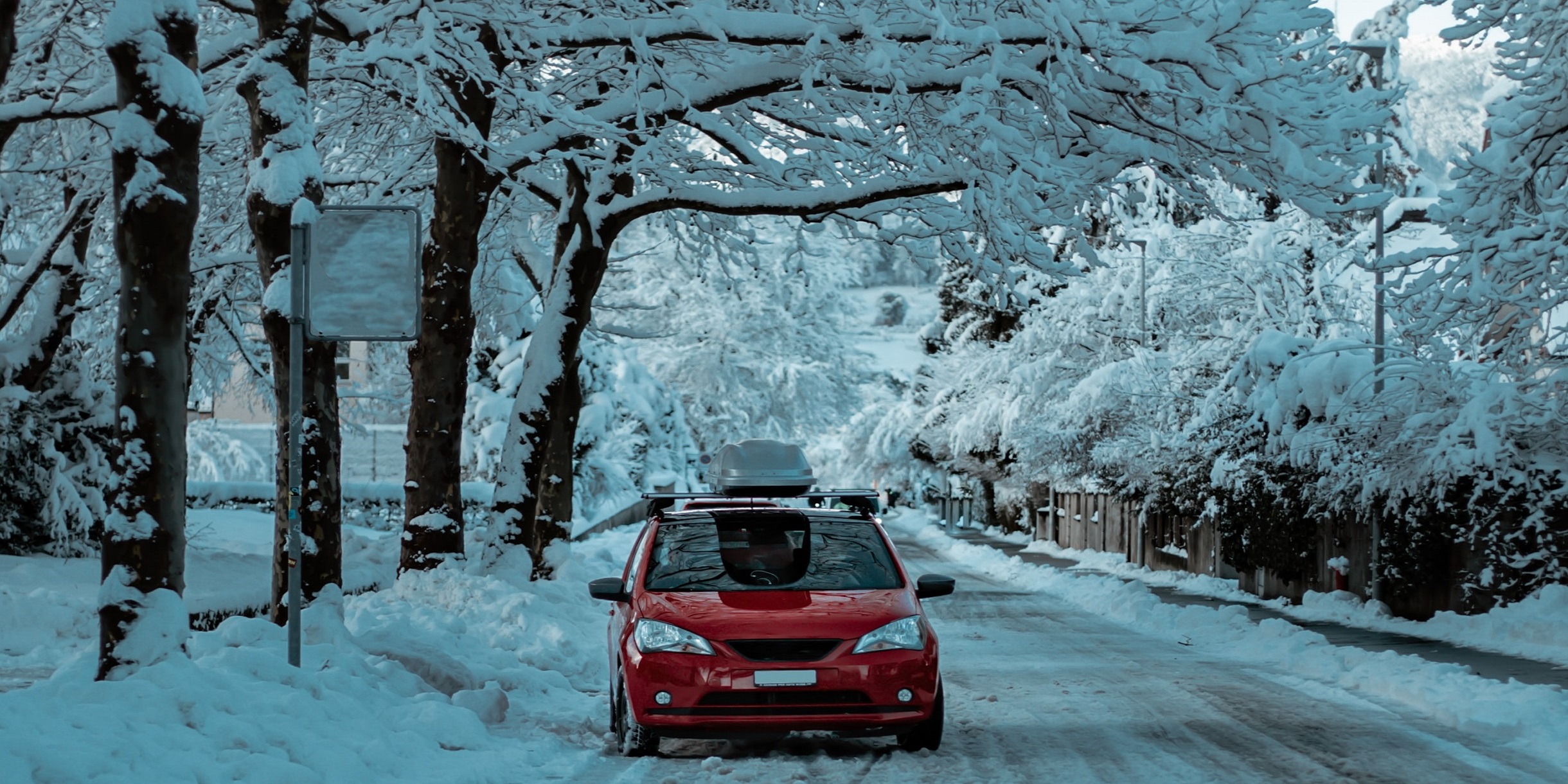|By Chilton Staff|
Winter’s snowy, wet, and windy weather plus cold temperatures put added stress on our vehicles. How can we protect our vehicle and those riding in it? Regular maintenance is key to preventing some of the most common automotive issues.
In addition, check these items before travel to help save you from a winter breakdown:
Tires
Winter conditions affect traction, handling, and fuel consumption. Care for your tires to ensure they’ll work as designed to protect you and your passengers.
- Check tire tread depth.
- Check the condition of the tire. At any time, a tire can pick up a nail. Gouges, nicks, bulges, and uneven wear are things to look out for.
- Make sure tires are properly inflated. An underinflated tire may not appear to be low and may not immediately trigger the tire pressure monitoring system (TPMS), so it’s important to check.
ChiltonLibrary’s service manual information, like the excerpt below on tire inflation pressures, can help.
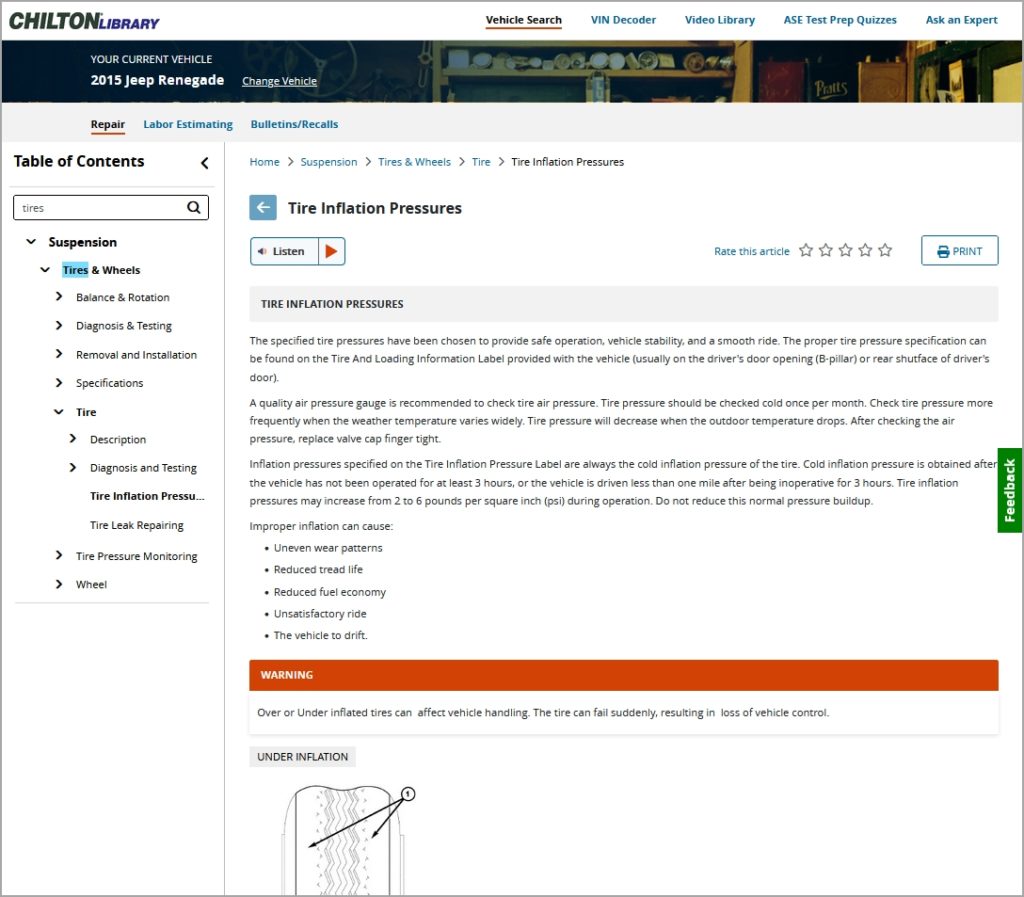
Antifreeze
Antifreeze helps internal combustion engines maintain the proper temperature even in extreme cold. It’s also called coolant, because the liquid’s properties help prevent an engine from overheating. Before traveling:
- Check the antifreeze or coolant.
- Refill as needed. Handle antifreeze safely; it’s toxic to people, pets, and wildlife.
Vehicle manufacturers specify the type of antifreeze they recommend for each year, make, and model. In the following excerpt from ChiltonLibrary, the service manual information describes how to properly check the antifreeze level and refill it for 2014–2020 Acura MDX vehicles. Honda specifies the type of antifreeze, and in this instance, an instruction to not add water.
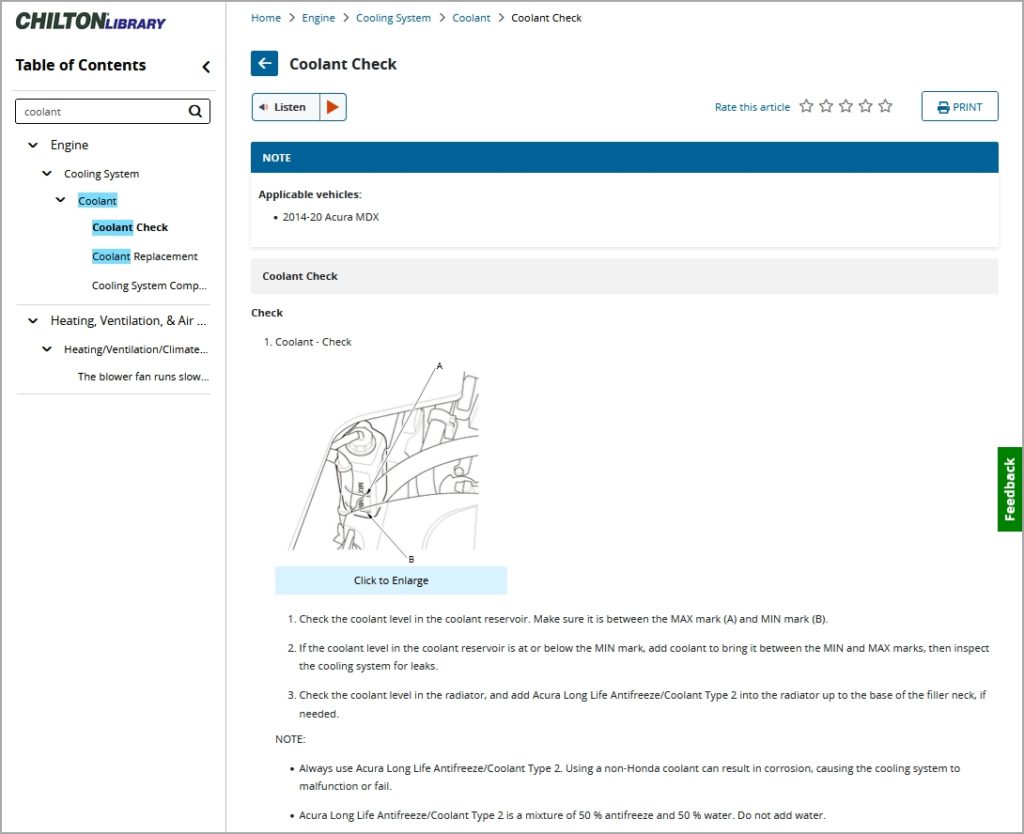
Engine Oil
Cold temperatures cause engine oil to become thicker and flow less easily. Cold-weather formulations balance the need for low viscosity to enable quick startup, with the need for oil thick enough to sufficiently lubricate the engine.
- Check the engine oil condition and level.
- Change the engine oil and filter if needed.
Check ChiltonLibrary’s service manual information for the automaker’s engine oil specifications. Review pertinent vehicle manufacturer communications in the “Bulletins and Recalls” section too. For instance, Ford issued a Special Service Message or “SSM,” with instructions for checking the oil level on 2015–2021 F-150s. Here’s an excerpt from ChiltonLibrary:
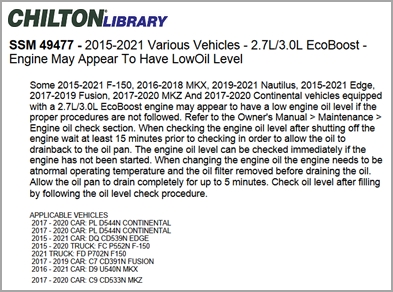
Visibility
Rain, snow, darkness, and fogged windows can impair a driver’s ability to see the road. Enhance your ability to see clearly with the following tips:
Before you drive:
- Clear the dashboard and backseat to make sure there’s nothing that could obstruct your view.
- If you have prescription glasses, wear them.
- Clean the windows and exterior lights.
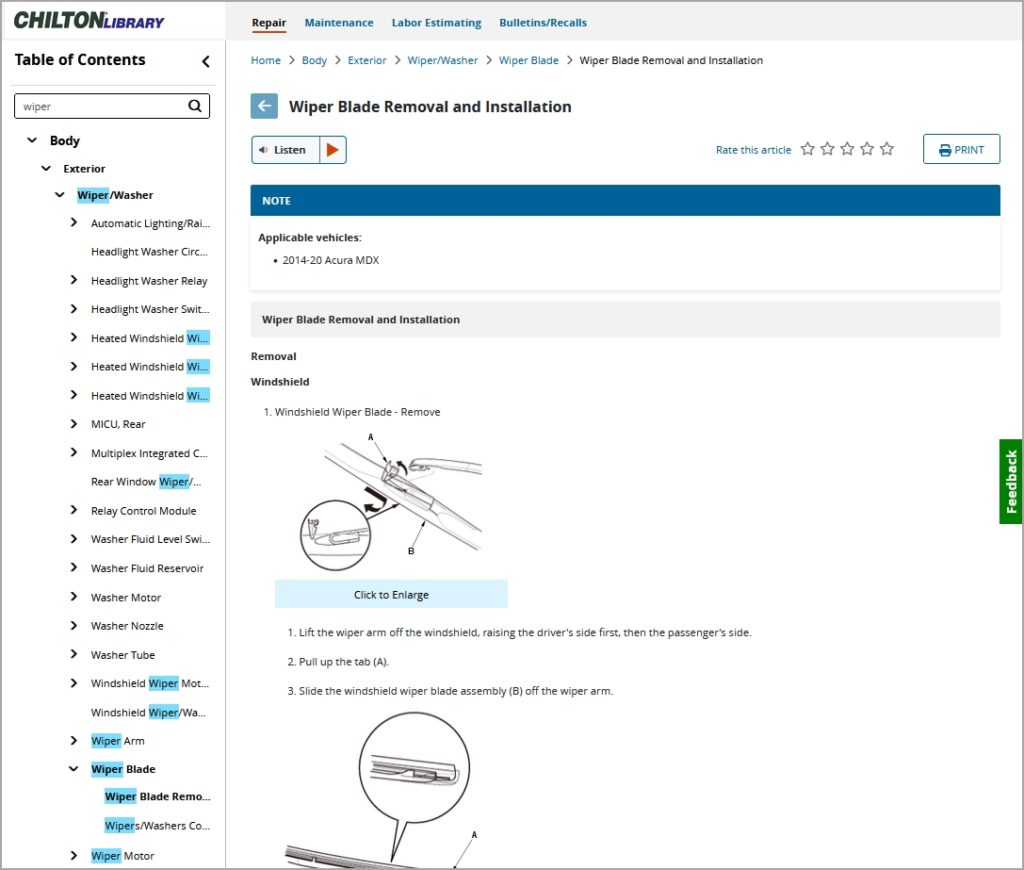
Battery
The battery is a cold-weather superhero, energizing the starter; keeping the lights on, the cabin warm, and the windows frost-free; powering the wipers; and entertaining passengers with music and movies.
But cold temperatures sap the battery’s strength at the same time it’s tasked to put out more electricity. The extra strain can lead a weak battery to fail. Protect the battery’s health with:
- Battery capacity checks and replace it if needed.
- Clean battery connections—as corrosion can form around terminals.
- Secure hold-downs fastening the battery to the vehicle.
Tech tips from ChiltonLibrary’s Video Library like the one below that’s drawn from automotive technician educational resources, help explain fundamentals like battery terminal corrosion and how to correct it.
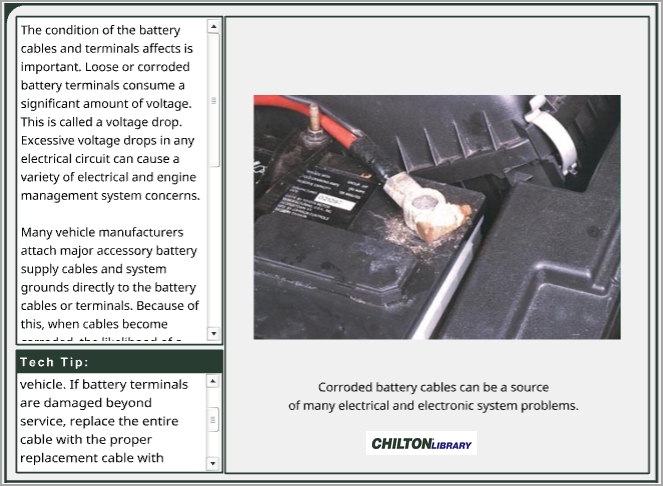
Protect your precious cargo by giving your vehicle tender loving care. Not a subscriber to ChiltonLibrary? Request a trial or contact your Gale representative.

